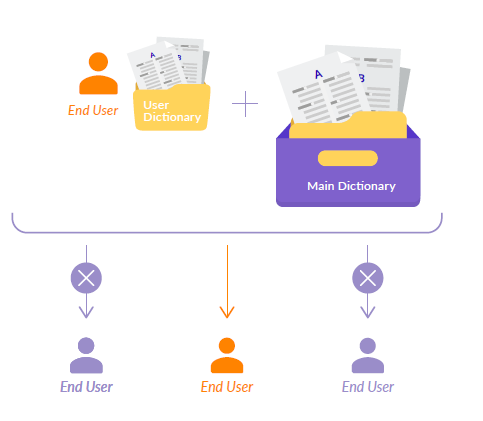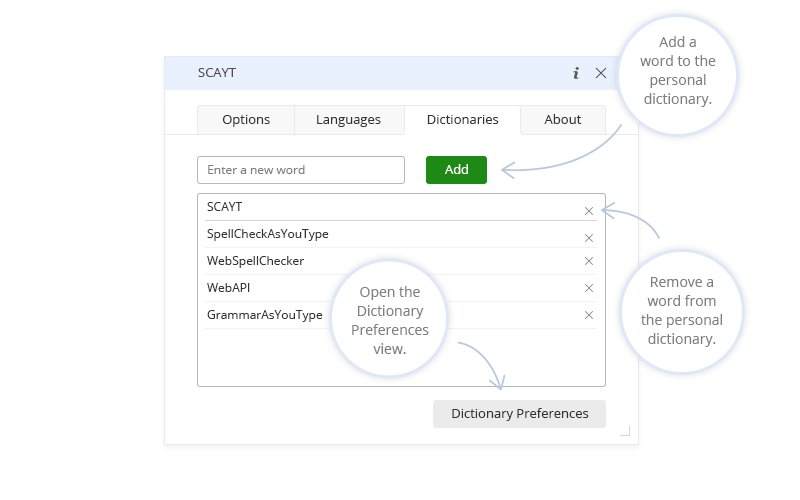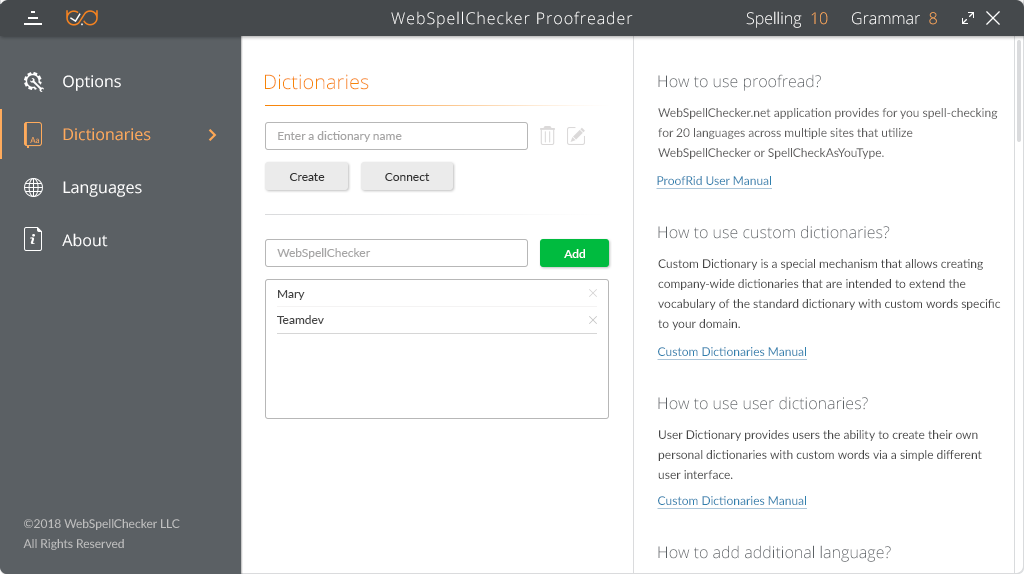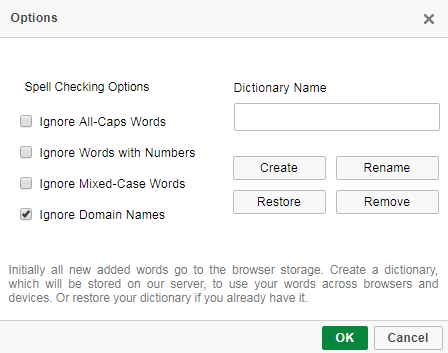2. User Dictionary User Interface
2.1. User Dictionary Interface in SCAYT Product
The personal user dictionary can be managed via simple user interface of the Settings dialog on the Dictionary tab. It allows users to create personal dictionaries with custom words (complex words, acronyms, proper names etc.) and use them while working with the system. All the words added to a personal dictionary will not be considered as misspellings and these words will also be available in the suggestions list. The user has the ability to look through the full list of the words that have been added to this dictionary and also manage the words from a simple user interface. The words can be added either from the context menu Add word or directly on the Dictionary tab. Dictionary preferences By default, all the words added to the personal dictionary are stored in the browser local storage on the user side. As soon as the user creates a new dictionary, all new words and the words from the browser local storage will be added to this dictionary and stored on the system server. It allows the user to use this personal dictionary from the different browsers and machines (or devices) while working with the system. Thus, users are not limited by one particular browser on their side as in case with the words stored in the browser local storage.
Check our User Manuals for the SCAYT product:
2.2. User Dictionary Interface in Proofreader
2.3. User Dictionary Interface in WSC
3. Predefined User Dictionary in Web Application
Product Integration User Dictionary Parameter WProofreader
You have an option to set a predefined User Dictionary on your web app for a particular editable element. With such an approach all the words added using Add word by your end users will be saved and stored in the dictionary that you have previously defined. To do so, specify a required User Dictionary parameter and set your predefined dictionary as a value.SCAYT plugin for CKEditor 4 WSC Dialog plugin for CKEditor 4 userDictionaryName
Example 3.1. Setting a Predefined User Dictionary in SCAYT for Editable Controls
<div contenteditable id="container1">
This is an exampl of a sentence with two mispelled words.
Just type text with misspelling to see how it works.
</div>
<script>
var instance1 = new SCAYT.SCAYT({
container: document.getElementById("container1"),
autoStartup: true,
customerID: "<your encrypted customer ID (activation key)",
spellcheckLang: 'en_US',
serviceProtocol: 'https',
serviceHost: 'your_service_host',
servicePort: '443',
servicePath: 'spellcheck31/script/ssrv.cgi',
userDictionaryName: 'your_user_dictionary_name'
});
</script>
Example 3.2. Setting a Predefined User Dictionary in SCAYT plugin for CKEditor 4
CKEDITOR.scayt_customerId: "your encrypted customer ID (activation key)", CKEDITOR.config.scayt_autoStartup = true; CKEDITOR.config.grayt_autoStartup = true; CKEDITOR.config.scayt_sLang ="en_US"; CKEDITOR.config.scayt_userDictionaryName='user_dictionary_name';
Example 3.3. Setting a Predefined User Dictionary in Proofreader
var EditableControlsInstance;
WEBSPELLCHECKER.init({
container: 'originalElementId'
autoStartup: true,
spellcheckLang: 'en_US',
localization: 'en',
serviceProtocol: 'http',
servicePort: '80',
serviceHost: document.location.host,
servicePath: 'spellcheck/script/ssrv.cgi'
},
function(instance) {
EditableControlsInstance = instance;
},
function(error) {
console.log(error);
}
);




